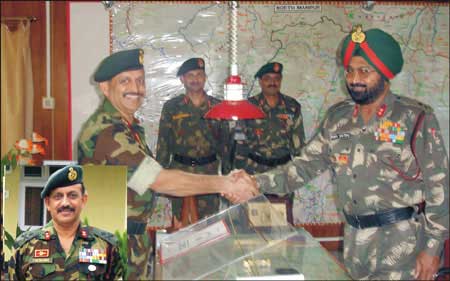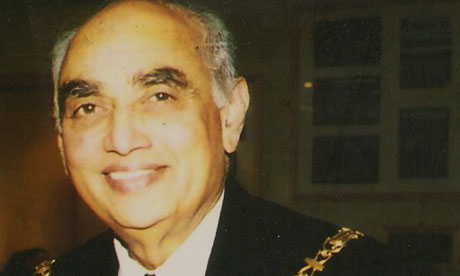There was more than one ray of hope on the horizon but Indian tennis in 2003 continued to look upto the old Messiah for deliverence.
Rohan Bopanna announced his arrival on the big stage with a courageous performance in the Davis Cup play-off; Prakash Amritraj, the son of the legendary Vijay Amritraj, left a blazing trail on his way to the top of Indian rankings; and Sania Mirza with her historic Wimbledon crown marked the changing face of women’s game in the country.
Yet, the entire nation looked upto one man, the ‘Miracle Man’ of Indian tennis, to bring salvation. Leander Paes at 30 rejuvenated his own sagging career with two grand slam titles with Martina Navratilova but without his magical inspiration India stumbled for the fourth consecutive time at the play off stage of the Davis Cup.
The brain cyst that laid him down in the middle of the season brought out those fighting qualities in the man who had time and again pulled off miraculous victories for the country in the past, overcoming a series of adversities in his colourful career.
And the mass outpouring of love for Paes one saw when a billion voices prayed for his recovery was something unheard of in recent history of mankind.
Paes did eventually come out of the hospital but his absence from the World Group qualifying tie proved to be a major handicap for India who lost 5-0 to the Netherlands.
Nevertheless, India did unearth a hero in defeat at Zwolle. In one of the longest matches in Cup history since tie-break was introduced, Rohan Bopanna almost pulled the rug from under the feet of Martin Verkerk. Stretching a top-20 player to five sets was in itself an achievement.
And, ranked in the 400s, had Bopanna pulled it off – he lost the decider 12/10 – it would have been a truly ‘Leanderian’ achievement.
In a country of few sporting achievements, what Bopanna did that September evening was akin to a 15-year old Sachin Tendulkar taking Abdul Qadir to the cleaners. To be sure, the wiry 23-year old lad from Coorg, Karnataka, was not exactly playing in his maiden Davis Cup tie.
When he entered the cauldron that was Eisselhallen, Bopanna had two wins under his belt, but those had come in a more friendly environment of grass surface at home. More importantly, he had looked a slaughtered lamb in his defeat against Australia when he made his debut in a similar play-off last season.
In Zwolle, the Dutch had assembled their best team, and it was on fast hard courts away from home. But in the more than four hours he spent on court that Friday, Bopanna had won many a heart with his fighting performance.
In the end, it did not matter that he did not win – none expected him to – but the bold manner in which he put his best foot forward and cut down the ego of the home team to size augured well for Indian tennis.
After Bopanna’s marathon performance, Prakash Amritraj lost in straight sets to Sjeng Schalken and although Bhupathi and Bopanna started promisingly in the doubles rubber, the Indians were actually running for cover over the next two days.
Amritraj did nothing earth-shattering that day but well before his first match in Indian colours, the 19-year old US-born had truly established himself as the number one Indian player on the circuit.
“Having a famous surname does not help you win matches, does it,” Amritraj had said smiling after losing in a Challenger event in India in April. Behind that smile was hidden attributes that helped him zoom from the 1000s to top-300 in ATP rankings.
Attributes handed down to him from his famous father – not the media savvyness but a strong work ethic and dedication to the game. He returned to the same dusty courts two months later for the Satellite circuit when he truly ‘came, saw and conquered’ the competition and the hearts.
For a player whose bread and butter was serve and volley, Amritraj’s rapid rise was a fantastic achievement in every sense. If anything, it presented a pleasant contrast to the eyes weary of the baseline slugfests.
And besides blowing away the myth that successful fathers don’t foster successful sons, it also assured the Indian fans that the sport had other talents to look up to besides the ageing Paes and Bhupathi.
source: http://www.mid-day.com / 2003-12-24



